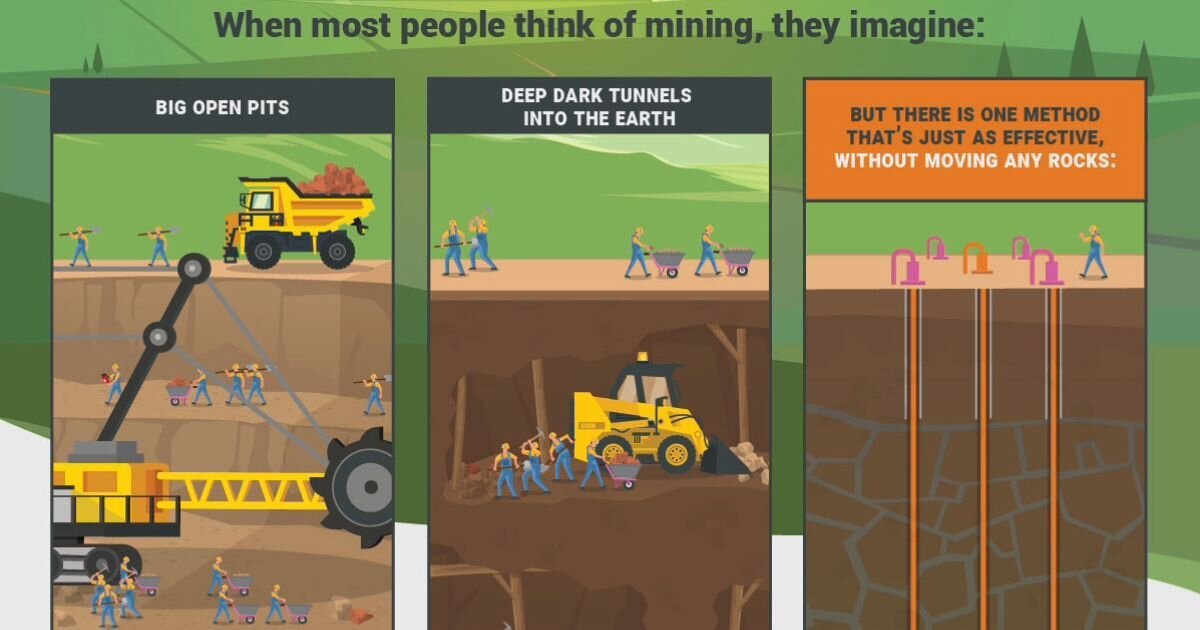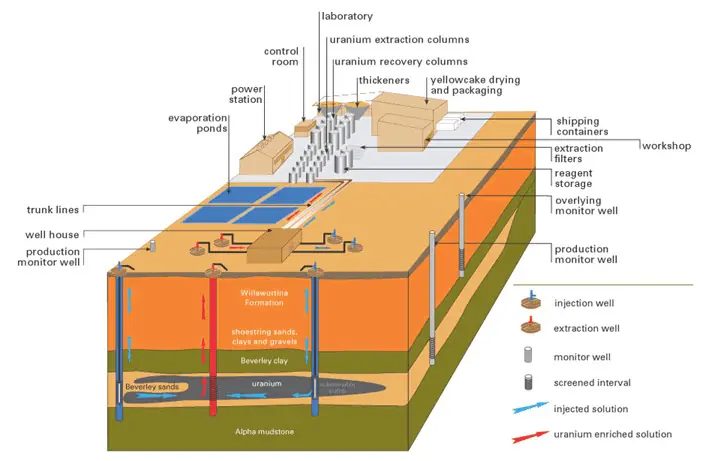
A new generation of mining technologies is emerging, one that challenges a centuries-old assumption: that extracting metals must involve breaking rock. Drawing from breakthroughs in membrane science, nanomaterials, and fluid engineering, these methods enable the selective recovery of dissolved metals directly from subsurface formations, without drilling or excavation.
At the heart of this innovation lies a concept inspired by osmotic processes. While not osmotic in the strict biological sense, the term here refers to selective ion transport driven by pressure or concentration gradients, using advanced membranes. As these techniques move from experimental to operational, they offer a credible pathway to access critical metals with minimal surface disruption, opening the door to a fundamentally different kind of mining by the end of this decade.
Mineral recovery via osmotic principles, where metal ions migrate through semi‑permeable membranes under pressure or osmotic gradients, is already in use for lithium extraction from brine (e.g. NREL 2021 Direct Lithium Extraction Report) and adapted experimentally to geological formations. Studies commissioned by CSIRO in Australia explore in‑situ recovery (ISR) techniques for rare earths and base metals with low disturbance and cost.
The public releases by CSIRO and Cobra Resources validate pilot ISR methods in Australia’s Boland project using low‑cost, minimally invasive in-situ recovery cobraplc.com.
Further, MDPI’s review of in‑situ leaching techniques (ISL), particularly for uranium, confirms its status as a low-impact, cost‑effective alternative to excavation mining www-pub.iaea.org.

Recent advances in materials science have accelerated the development of ion-selective membranes based on graphene oxide and MXenes, which show high potential for separating targeted metal ions from complex solutions. A 2023 study published in Nature Reviews Materials highlights how 2D materials like MXenes offer customizable surface properties and high chemical resistance, making them promising candidates for selective ion transport in harsh environments such as those encountered in leaching circuits or osmotic recovery systems.
When integrated with in-situ recovery (ISR) techniques, these next-generation membranes could significantly improve metal selectivity, reduce reagent losses, and enable modular, low-footprint processing systems adaptable to remote or sensitive mining environments.
The integration of reactive transport modeling and AI-based control systems is becoming essential for optimizing in-situ recovery (ISR) operations. A 2023 open-access article published in Mining (MDPI) outlines how digital twin frameworks enable real-time monitoring of hydraulic flow, pH variation, reagent diffusion, and recovery kinetics in uranium ISR settings. These digital models support predictive decision-making and significantly reduce environmental risks through adaptive process control.
Such tools, when adapted for other metals, pave the way for automated osmotic mineral recovery, especially in heterogeneous or fractured geological environments.
While reverse osmosis ISR is still emerging, the in-situ leaching (ISL) model for uranium mining provides a robust regulatory precedent. According to the International Atomic Energy Agency (IAEA), ISL is recognized as a lower-impact mining method requiring Environmental Impact Assessments (EIA), hydrogeological modeling, and strict monitoring protocols. The IAEA’s 2016 technical report on ISR outlines best practices for minimizing aquifer contamination and enforcing post-mining site remediation.
These internationally recognized guidelines offer a foundational framework for adapting similar environmental governance to non-radioactive critical metals, particularly in jurisdictions aiming to balance mineral development and ecological integrity.
The recovery of metals without excavation, through membrane-assisted in-situ methods, is no longer a theoretical concept. Grounded in advances in materials science and field-tested through early-stage pilots, it now represents a credible alternative to conventional mining, particularly for low-grade, scattered, or environmentally sensitive deposits.
By drastically reducing surface disturbance, water use, and infrastructure requirements, this approach opens new possibilities for producing critical minerals in regions where traditional mining is no longer viable or acceptable. It also offers an opportunity to rethink how extraction can align with environmental constraints and geopolitical priorities.
To move forward, the focus must shift from experimentation to deployment. This will require greater coordination between industry players, researchers, regulators, and financial actors, each playing a role in shaping a new generation of mining practices that are both effective and aligned with the expectations of our time.





